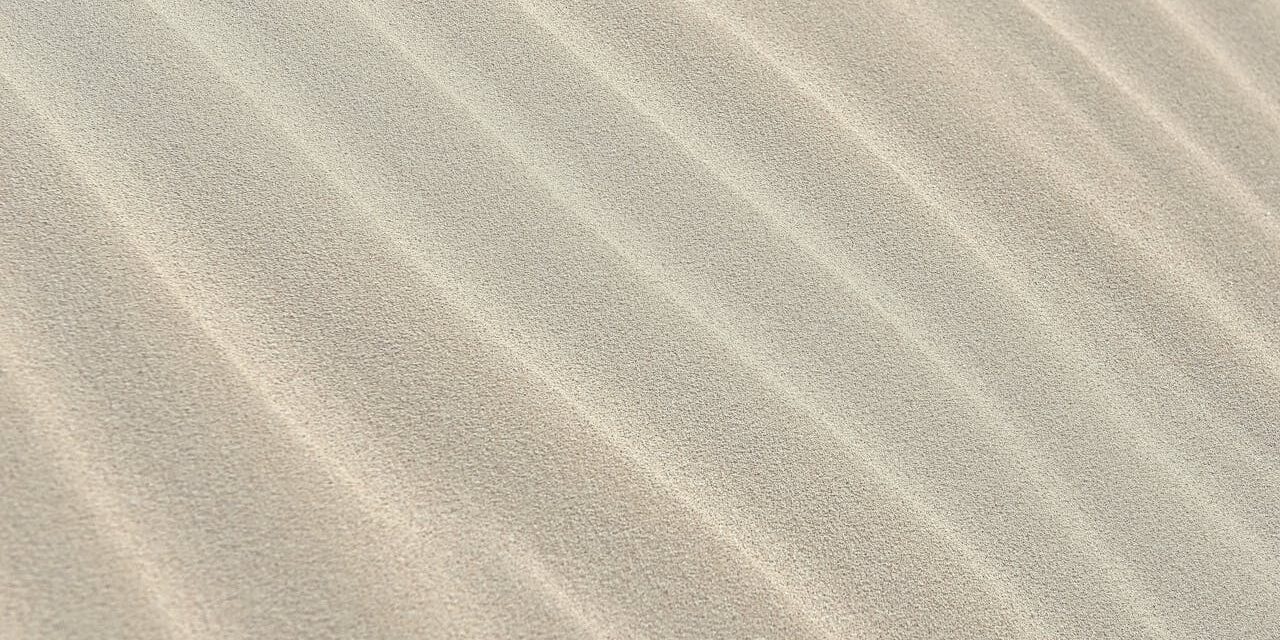Have you ever considered the sand beneath your toes while walking along the beach?
Most people don’t, but let me tell you, the world of sand is sand-tastic! It’s not just a mix of tiny rocks and shells but an incredible amalgamation of geological history, diverse composition, and practical uses. In this blog post, we’ll explore the fascinating characteristics of sand from different regions, uncover how it’s formed, and delve into its various applications in art, construction, and industry. So let’s dive in and embark on this grainy adventure together!
Table of Contents
Sand Composition: A Geological Mosaic
Sand is a marvel of diversity in terms of its composition and origins.
It’s formed from the weathering and erosion of rocks, which break down into small particles over time. These tiny grains, often just millimeters in size, can consist of minerals, organic materials, or even fragments of other rocks.
- Mineral Sands: Some sands are rich in specific minerals. For instance, olivine sand, found in Hawaii, boasts a stunning green hue due to the presence of olivine crystals. Meanwhile, garnet sand, found in some areas of India and the United States, displays a deep red color as it contains garnet minerals.
- Biogenic Sands: Other sands are predominantly composed of organic materials. One example is the famous white sand beaches of the Caribbean and Maldives, which owe their pure color to the remains of tiny marine organisms like coral and mollusk shells.
- Lithic Sands: Sands primarily composed of rock fragments are called lithic sands. For example, volcanic sands near volcanic islands and areas with high volcanic activity are rich in volcanic rock fragments such as basalt and pumice.
The Formation of Sand: A Tale of Time and Nature
The process of sand formation is both fascinating and complex. It begins with the weathering and erosion of rocks, which are gradually broken down into smaller and smaller particles. This transformation can occur due to several factors, including:
- Physical Weathering: Rocks are broken down by mechanical forces like freezing and thawing, temperature fluctuations, or an abrasion from wind, water, or other rocks.
- Chemical Weathering: Minerals within rocks react with water, oxygen, or other chemicals, causing them to weaken, dissolve, or change composition.
- Biological Weathering: The actions of living organisms, such as plants, bacteria, or animals, can contribute to rock breakdown.
Once the rock particles are small enough, they’re transported by wind, water, or ice to new locations. Over time, these tiny grains accumulate to form the vast, diverse landscapes of sand that we know and love.
Sand in Action: From Art to Industry
Sand is more than just a picturesque backdrop for beach vacations—it also boasts a wide range of practical applications. Here are some examples of how sand is used in various domains:
- Art: Sand can be employed as a medium for breathtaking sand sculptures, intricate mandalas, or even colorful sand paintings. These artistic creations showcase the versatility and beauty of sand in different forms.
- Construction: In construction, sand is a key component of concrete, mortar, and glass. Its unique properties make it an ideal aggregate, providing strength and stability to various structures.
- Industry: Sand is used as a raw material in various industrial processes, including hydraulic fracturing, metal casting, and water filtration. The specific type of sand required depends on the application and its unique characteristics.
A Grain of Truth in Every Beach
Who knew the humble sand beneath our feet could hold such a treasure trove of information, beauty, and utility? From its diverse composition and intricate formation processes to its multitude of uses, sand is truly a marvel of nature.
So, the next time you find yourself on a beach or in the desert, take a moment to appreciate the fascinating world of sand. You might be inspired to create your own sand art masterpiece or embark on a geological adventure!
Now that you’ve learned about the sand-tastic science behind these tiny grains, we’d love to know which sand type intrigues you the most? Have you ever used sand creatively or practically?





